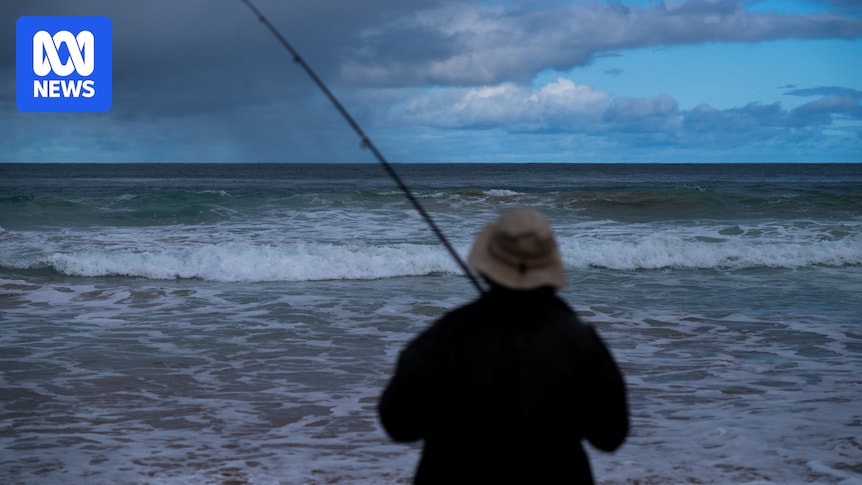A new artificial reef will be created off the South Australian coast to help the state’s recreational fishing sector battle the ongoing impacts of the algal bloom “disaster”, the state government says.
The government said it was also looking to open more of the state’s reservoirs for freshwater fishing “where consistent with public health advice”, and boost fish stocks in reservoirs and lakes to take pressure off the marine environment.
Seven steps scientists say will tackle toxic algal bloom
The bloom is devastating some of the state’s commercial and recreational fisheries, as well as hitting parts of the economy that rely on them, such as regional tourism.
The government today unveiled measures to support recreational fishers, with short-term funding of $200,000 for RecFish SA to bolster community participation initiatives, such as fishing lessons and competitions.
RecFish SA’s executive officer Asher Dezsery said fishing and tackle shops were desperately in need of stimulus.
“They’ve had sales collapse by up to 70 per cent so they really need not handouts but feet through the door, they need boots on the ground, they need customers,” Mr Dezsery said.
“What we’ve seen is: when recreational fishing stops, the economy stops with it.”
The algal bloom has caused countless fish to wash up along sections of the SA coast. (ABC South East SA: Caroline Horn)
The funding forms part of the state and federal governments’ $28 million support package, with $300,000 to be spent on installing an artificial reef somewhere in Gulf St Vincent.
“The idea of re-establishing reefs as soon as we see this bloom pass is a really important one,” SA Environment Minister Susan Close said.
“The faster we can help nature restore, the faster we can accelerate that recovery, the faster we’ll all be able to move past the experience of this bloom and also make ourselves more resilient in the event that it returns.”
SA oyster region temporarily closed
SA Premier Peter Malinauskas said recreational fishers were feeling the economic effects of the bloom — which he described as a “natural disaster” — even in regions that had avoided environmental impact.
“The algal bloom has impacted around about 27 per cent of our coastline, which means 73 per cent of our coastline remains completely unaffected,” Mr Malinauskas said.
“There are whole regional communities that are underpinned by recreational fishers who book an Airbnb and go to the pub and go to the cafe and restaurant, buy equipment from the local fishing tackle shop.
“But if there is a perception they can’t fish, then all of that is dramatically undermined.”Reservoir plan needs SA Water and SA Health advice
South Australia has several artificial reefs, and it is understood a precise location for the new one has not yet been decided.
RecFish SA has strongly backed the proposal, and the government believes it will boost fish stocks and allow “real-time monitoring” of the environment by researchers and citizen scientists.
“We know that artificial reefs, from interstate projects, 100 per cent assist fish stocks in recovering. They also create biodiversity,” Mr Dezsery said.
Among the earliest signs of the algal bloom were large amounts of foam along the state’s south coast. (ABC South East SA: Caroline Horn)
According to the Department of Primary Industries and Regions, recreational fishing is already permitted in several of the state’s reservoirs. RecFish SA said the government was looking to expand that further, including in regional areas.
“We need to receive advice from SA Water and have the SA Health department look at those … but we’re definitely focusing on some of those regional areas out west,” Mr Dezsery said.
“Wherever there’s water, wherever there’s reservoirs, council stormwater catchments — any body of water, we’re trying to create freshwater fishing opportunities so people can keep fishing without putting pressure on that marine environment.”
Murray Watt tackles an algal bloom – and a perception problem
Speaking before the announcement, SA Opposition Leader Vincent Tarzia said that what had been offered to recreational fishers so far had been “completely inadequate”, and he issued his own call for reservoir fishing.
“There are a number of things that the government could be doing to help the recreational fishing space — one of them, for example, is the government could be doing things like stocking fish and allowing some of our reservoirs, where it’s safe to be done, to be fished in,” Mr Tarzia said.
“That would add significant value in the recreational space.”
Mr Tarzia has also suggested tourism vouchers, like those that were made available in the wake of the 2023 River Murray floods, could be handed out to encourage regional travel.
“These sort of stimulus payments for experiences and also accommodation would go a long way to helping the recreational fishing space as well,” he said.
“Any sort of stimulus that could be allowed for that sort of area would certainly be welcome.”

